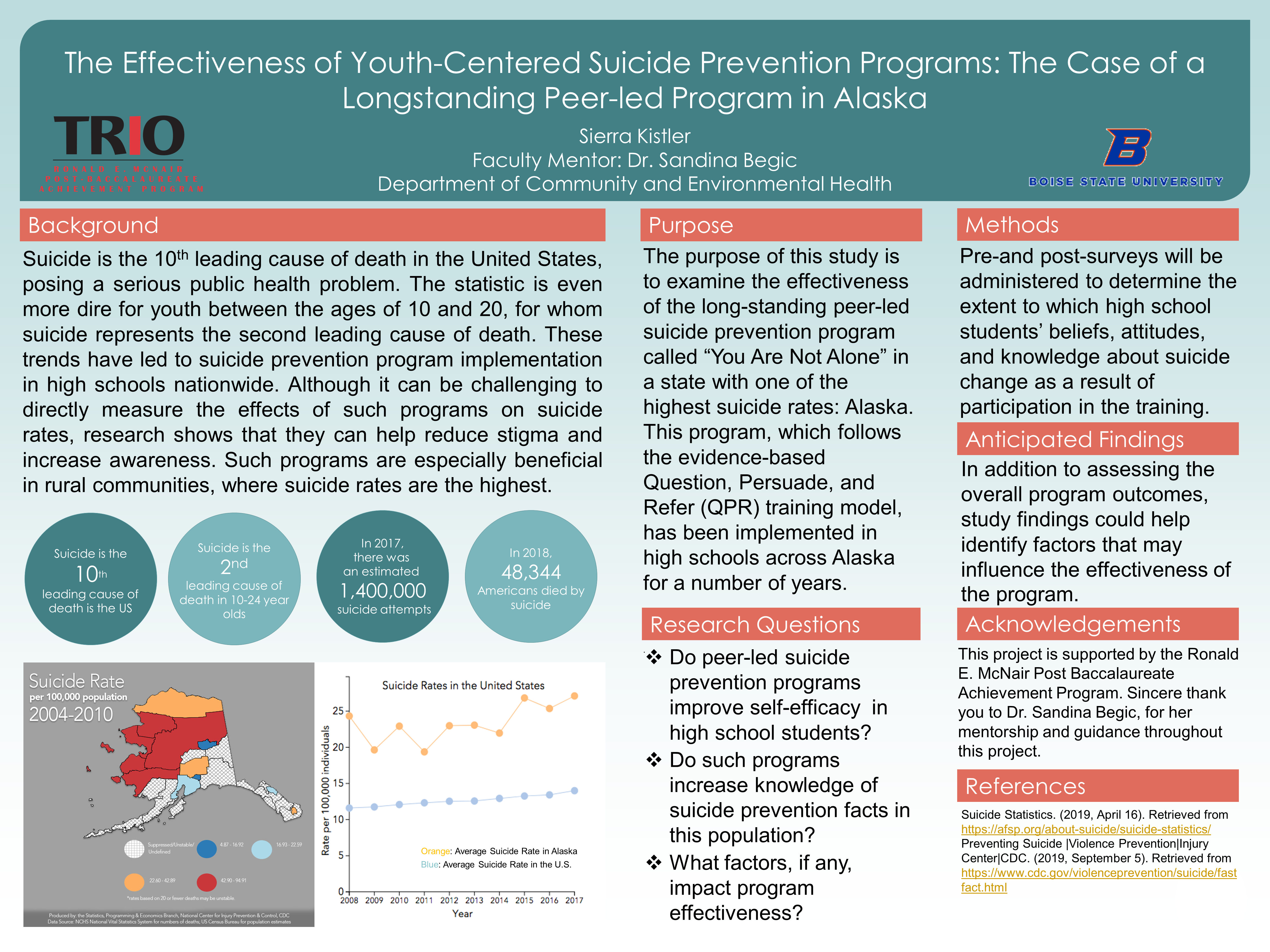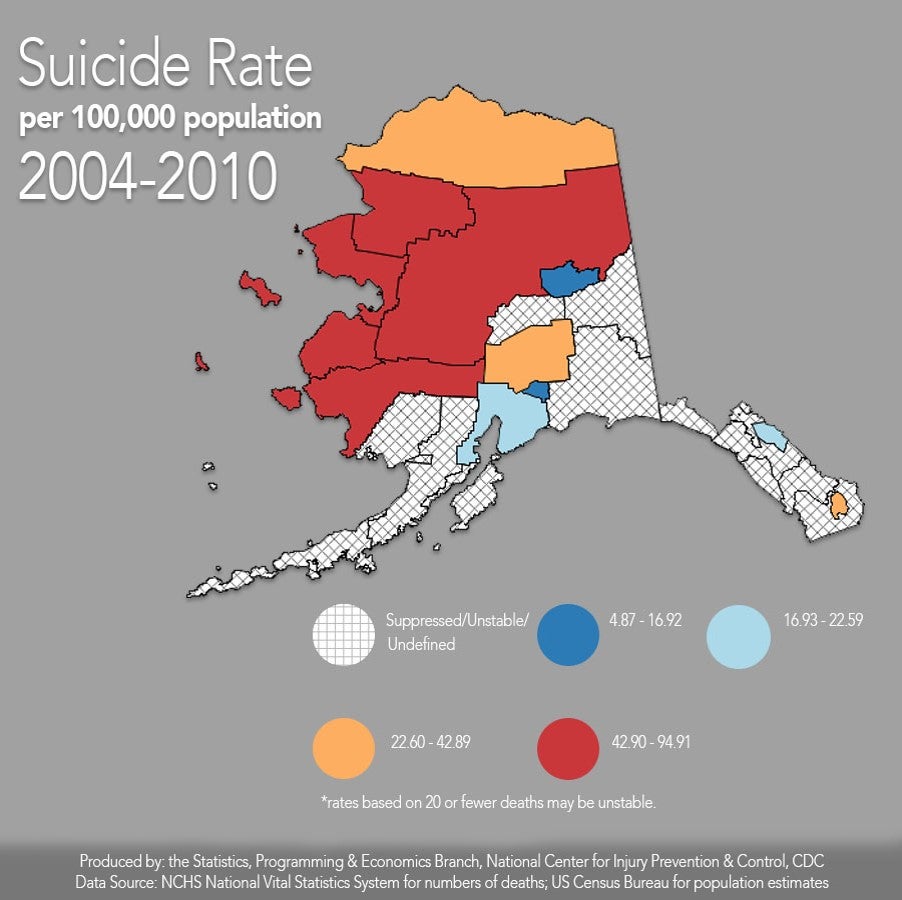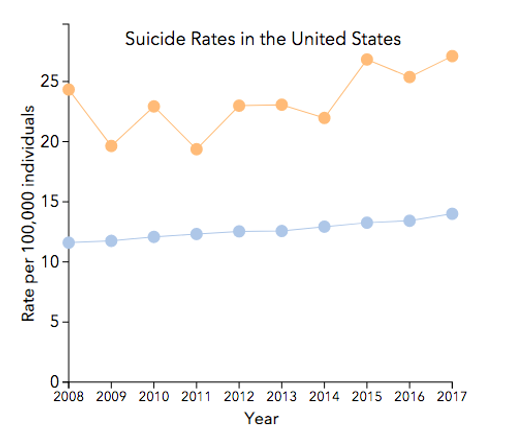Sierra A. Kistler, Dr. Sandina Begic

Background
Suicide is the 10th leading cause of death in the United States, posing a serious public health problem. The statistic is even more dire for youth between the ages of 10 and 20, for whom suicide represents the second leading cause of death. These trends have led to suicide prevention program implementation in high schools nationwide. Although it can be challenging to directly measure the effects of such programs on suicide rates, research shows that they can help reduce stigma and increase awareness. Such programs are especially beneficial in rural communities, where suicide rates are the highest.
- Suicide is the 10th leading cause of death is the US
- Suicide is the 2nd leading cause of death in 10-24 year olds
- In 2017, there was an estimated 1,400,000 suicide attempts
- In 2018, 48,344 Americans died by suicide


Purpose
The purpose of this study is to examine the effectiveness of the long-standing peer-led suicide prevention program called “You Are Not Alone” in a state with one of the highest suicide rates: Alaska. This program, which follows the evidence-based Question, Persuade, and Refer (QPR) training model, has been implemented in high schools across Alaska for a number of years.
Research Questions
- Do peer-led suicide prevention programs improve self-efficacy in high school students?
- Do such programs increase knowledge of suicide prevention facts in this population?
- What factors, if any, impact program effectiveness?
Methods
Pre-and post-surveys will be administered to determine the extent to which high school students’ beliefs, attitudes, and knowledge about suicide change as a result of participation in the training.
Anticipated Findings
In addition to assessing the overall program outcomes, study findings could help identify factors that may influence the effectiveness of the program.
Acknowledgements
This project is supported by the Ronald E. McNair Post Baccalaureate Achievement Program. Sincere thank you to Dr. Sandina Begic, for her mentorship and guidance throughout this project.
References
- Suicide Statistics. (2019, April 16). Retrieved from https://afsp.org/about-suicide/suicide-statistics/
- Preventing Suicide |Violence Prevention|Injury Center|CDC. (2019, September 5). Retrieved from https://www.cdc.gov/violenceprevention/suicide/fastfact.html
Additional Information
For questions or comments about this research, contact Sierra Kistler at sierrakistler@u.boisestate.edu.